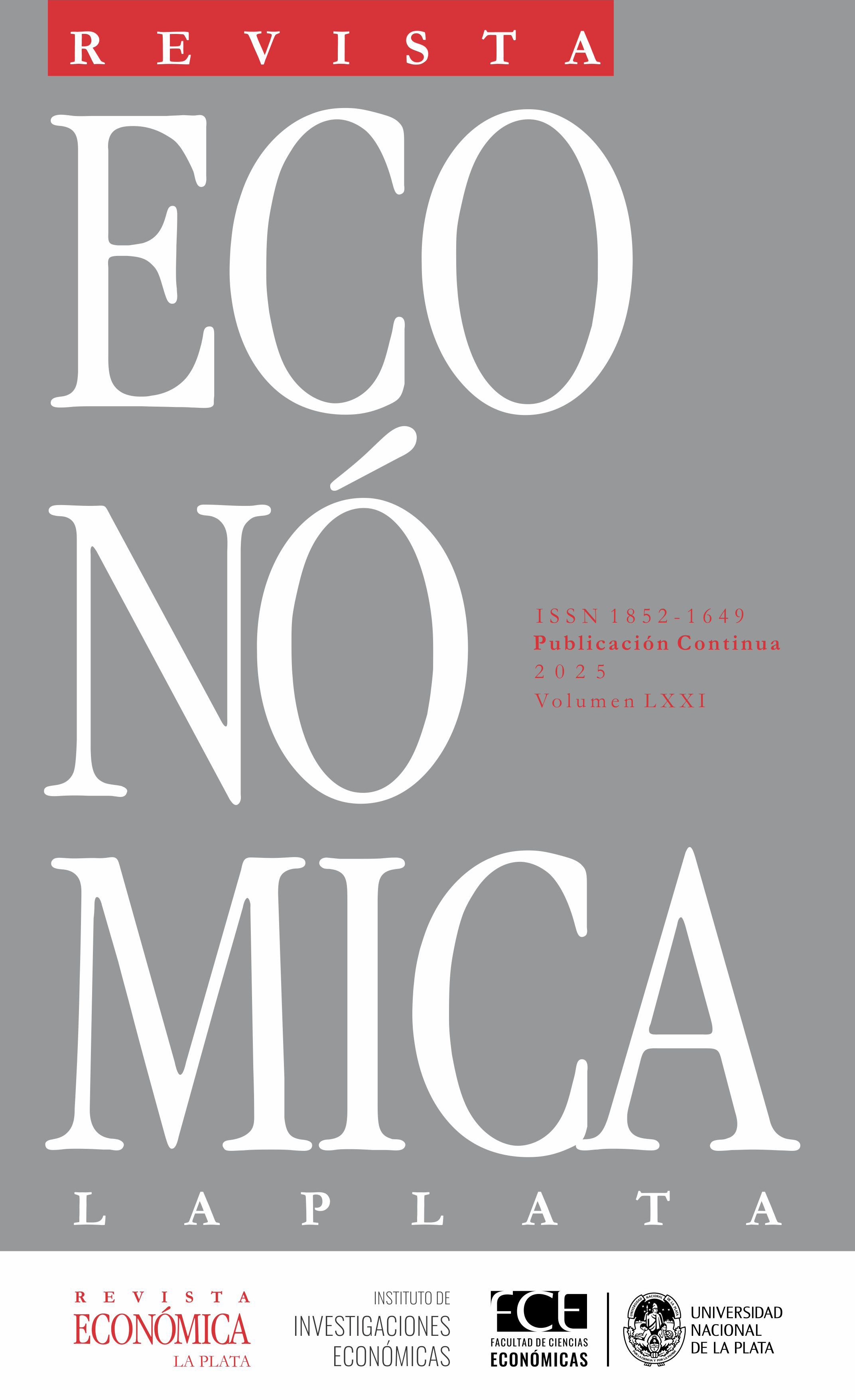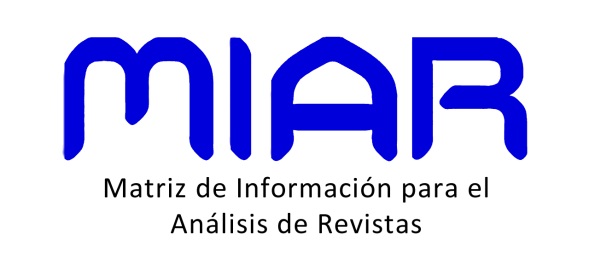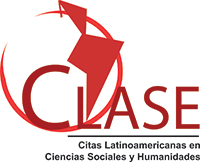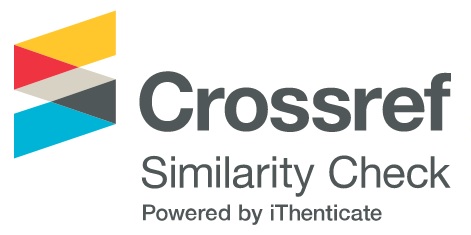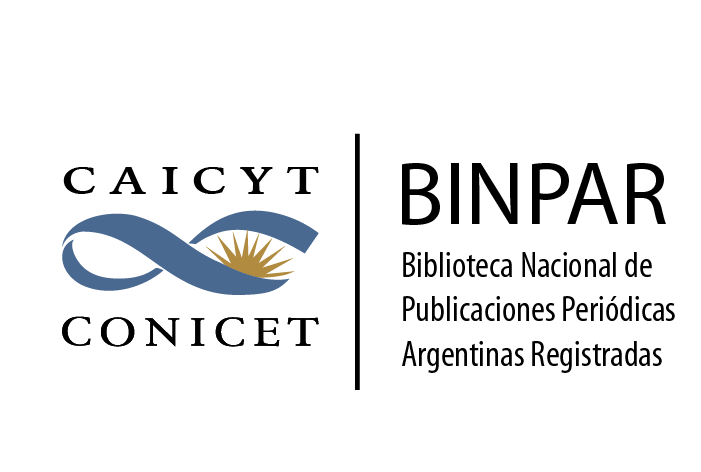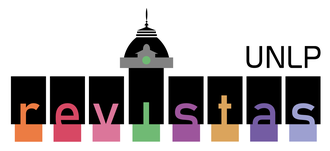La evolución de los shocks externos y los resultados macrofiscales en los Andes
DOI:
https://doi.org/10.24215/18521649e039Palabras clave:
politica fiscal, gestion de recursos naturales, SVAR bayesiano en tiempo variableResumen
La abundancia de recursos naturales a menudo desestabiliza los resultados macroeconómicos. La gestión eficaz de los recursos de las industrias extractivas, respaldada por instituciones económicas sólidas, es crucial para mantener la estabilidad macroeconómica y fomentar el crecimiento a largo plazo. Este documento examina el impacto de las perturbaciones en los términos de intercambio sobre los resultados fiscales y el crecimiento económico en la Región Andina. Utilizando un modelo estructural de vector autorregresivo de tiempo variable (TV SVAR), estimamos la magnitud de estas perturbaciones y la sensibilidad de las variables fiscales y macroeconómicas. Nuestros resultados revelan efectos significativos y variables en el tiempo, así como heterogeneidad entre países, reflejando distintos niveles de desarrollo institucional. Las conclusiones destacan la importancia de contar con marcos económicos sólidos para mitigar los efectos adversos de la volatilidad en los términos de intercambio.
Descargas
Métricas
Citas
Aguiar, M. y Amador, M. (2011). Growth in the shadow of expropriation. The Quarterly Journal of Economics, 126(2), 651-697.
Alberola, E. y Sousa, R. (2017). Assessing fiscal policy through the lens of the financial and the commodity price cycles (Working Paper 638). Bank for International Settlements.
Alesina, A., Campante, F. y Tabellini, G. (2008). Why is fiscal policy often procyclical? Journal of the European Economic Association, 6(5), 1006-1036. https://doi.org/10.1162/JEEA.2008.6.5.1006
Andrian, L. G., Hirs, J. y Valencia, O. (2023). Instituciones fiscales en los países de la Región Andina y retos derivados del proceso de descarbonización (Nota técnica 2820). Banco Interamericano de Desarrollo. https://doi.org/10.18235/0005253
Arenas de Mesa, A. y Mosqueira, E. (2021). La transformación y el fortalecimiento institucional de los Ministerios de Hacienda en América Latina: del control al uso estratégico de los recursos públicos para el desarrollo (Documentos de Proyectos LC/TS.2021/23). Comisión Económica para América Latina y el Caribe (CEPAL), Banco Interamericano de Desarrollo (BID).
Barreix, A. D. y Corrales, L. F. (Eds.). (2019). Reglas fiscales resilientes en América Latina. (Vol. 767). Inter-American Development Bank.
Barro, R. (1979). On the determination of the public debt. Journal of Political Economy, 87(5), 940-971.
Bauwens, L., Lubrano, M. y Richard, J. (1999). Bayesian inference in dynamic econometric models. Oxford University Press.
Benati, L. y Mumtaz, H. (2007). US evolving macroeconomic dynamics: A structural investigation (Working Paper Series No. 746). European Central Bank.
Bjørnland, H. C. y Thorsrud, L. A. (2019). Commodity prices and fiscal policy design: Procyclical despite a rule. Journal of Applied Econometrics, 34(2), 161-180. https://doi.org/10.1002/jae.2669
Blake, A. y Mumtaz, H. (2017). Applied Bayesian econometrics for central bankers. Centre for Central Banking Studies, Bank of England.
Caballero, R. J. y Krishnamurthy, A. (2004). Fiscal Policy and Financial Depth (Working Paper 10532). National Bureau of Economic Research.
Camacho, M. y Perez-Quiros, G. (2014). Commodity prices and the business cycle in Latin America: Living and dying by commodities? Emerging Markets Finance and Trade, 50(2), 110-137.
Carter, C. y Kohn, R. (1994). On Gibbs sampling for state space models. Biometrika, 81(3), 541-553. https://doi.org/10.2307/2337125
Casella, G. y George, E. (1992). Explaining the Gibbs Sampler. The American Statistician, 46(3), 167-174. https://doi.org/10.1080/00031305.1992.10475878
Céspedes, L. F., Parrado, E. y Velasco, A. (2014). Fiscal rules and the management of natural resource revenues: The case of Chile. Annual Review of Resource Economics, 6(1), 105-132. https://doi.org/10.1146/annurev-resource-100913-012856
Céspedes, L. F. y Velasco, A. (2012). Macroeconomic performance during commodity price booms and busts. IMF Economic Review, 60(4), 570-599.
Céspedes, L. F. y Velasco, A. (2014). Was this time different? Fiscal policy in commodity republics. Journal of Development Economics, 106(C), 92-106.
Cueva, S. y Díaz, J. P. (2021). The history of Ecuador. En T. J. Kehoe y J. P. Nicolini (Eds.), A monetary and fiscal history of Latin America, 1960–2017 (pp. 277-319). University of Minnesota Press.
Del Negro, M. y Primiceri, G. E. (2013). Time-varying structural vector autoregressions and monetary policy: A corrigendum (Staff Report 619). Federal Reserve Board of New York.
Erbil, N. (2011). Is fiscal policy procyclical in developing oil-producing countries? (Working Paper 171). International Monetary Fund. https://www.imf.org/en/Publications/WP/Issues/2016/12/31/Is-Fiscal-Policy-Procyclical-in-Developing-Oil-Producing-Countries-25063
Fernández, A., González, A. y Rodriguez, D. (2018). Sharing a ride on the commodities roller coaster: Common factors in business cycles of emerging economies. Journal of International Economics, 111, 99-121. https://doi.org/10.1016/j.jinteco.2017.11.008
Fernández, A., Schmitt-Grohé, S. y Uribe, M. (2020). Does the commodity super cycle matter? (Working Paper 27589). National Bureau of Economic Research. https://doi.org/10.3386/w27589
Frankel, J. A. (2010). The natural resource curse: A survey (Working Paper 15836). National Bureau of Economic Research. https://doi.org/10.3386/w15836
Frankel, J., Vegh, C. y Vuletin, G. (2013). On graduation from fiscal procyclicality. Journal of Development Economics, 100, 32-47.
Gavin, M., Hausmann, R., Perotti, R. y Talvi, E. (1996). Managing fiscal policy in Latin America and the Caribbean: Volatility, procyclicality and limited creditworthiness. Inter-American Development Bank. http://dx.doi.org/10.18235/0011562
Gavin, M. y Perotti, R. (1997). Fiscal policy in Latin America. En B. S. Bernanke y J. J. Rotemberg (Eds.), NBER Macroeconomics Annual 1997 (vol. 12, pp. 11-70). MIT Press.
Harberger, A. C. (1950). Currency depreciation, income, and the balance of trade. Journal of Political Economy, 58(1), 47-60. https://doi.org/10.1086/256897
Harberger, A. C. (1950). Currency depreciation, income, and the balance of trade. Journal of Political Economy, 58(1), 47-60. https://doi.org/10.1086/256897
Ilzetzki, E. (2011). Rent-seeking distortions and fiscal procyclicality. Journal of Development Economics, 96(1), 30-46. https://doi.org/10.1016/j.jdeveco.2010.07.006
Ilzetzki, E. y Vegh, C. (2008). Procyclical fiscal policy in developing countries: Truth or fiction? (Working Paper 14191). National Bureau of Economic Research. https://doi.org/10.3386/w14191
Izquierdo, A., Romero, R. y Talvi, E. (2008). Booms and busts in Latin America: The role of external factors (Working Paper 631). Inter-American Development Bank. http://dx.doi.org/10.18235/0010885
Jacquier, E., Polson, N. y Rossi, P. (2004). Bayesian analysis of stochastic volatility models. Journal of Business and Economic Statistics, 12(4), 371-418. https://doi.org/10.1080/07350015.1994.10524553
Jemio, L. C. (2006). Volatilidad externa y el sistema financiero en Bolivia. Informe de consultoría elaborado para la Corporación Andina de Fomento (CAF).
Kalmanovitz, S. (2017). Breve historia económica de Colombia. Biblioteca Nacional de Colombia. Ministerio de Cultura.
Kaminsky, G. L., Reinhart, C. M. y Végh, C. A. (2004). When it rains, it pours: Procyclical capital flows and macroeconomic policies (NBER Working Paper No. 10780). National Bureau of Economic Research.
Kehoe, T. J. y Nicolini, J. P. (Eds.). (2022). A monetary and fiscal history of Latin America, 1960-2017. University of Minnesota Press.
Kehoe, T. J., Machicado, C. G. y Peres-Cajías, J. (2022). The history of Bolivia. En T. J. Kehoe y J. P. Nicolini (Eds.), A monetary and fiscal history of Latin America, 1960-2017 (pp. 83-129). University of Minnesota Press.
Kim, C. y Nelson, C. (1999). State-space models with regime switching. MIT Press.
Kose, M. (2002). Explaining business cycles in small open economies: “How much do world prices matter?”. Journal of International Economics, 56(2), 299-327.
Lane, P. y Tornell, A. (1996). Power, growth and the voracity effect. Journal of Economic Growth, 1(2), 213-241. https://doi.org/10.1007/BF00138863
Laursen, S. y Metzler, L. A. (1950). Flexible exchange rates and the theory of employment. The Review of Economics and Statistics, 281-299.
Levy, A., Ricci, L. A. y Werner, A. M. (2020). The sources of fiscal fluctuations (Working Paper 2020/220). International Monetary Fund.
Mankiw, N. G. y Romer, D. (1991). New Keynesian Economics. MIT Press.
Martinelli, C. y Vega, M. (2021). The history of Peru. En T. J. Kehoe y J. P. Nicolini (Eds.), A monetary and fiscal history of Latin America, 1960–2017 (pp. 401-448). University of Minnesota Press.
Medina, L. (2016). The effects of commodity price shocks on fiscal aggregates in Latin America. IMF Economic Review, 64(3), 502-525. https://doi.org/10.1057/imfer.2016.14
Melo-Becerra, L. A., Parrado-Galvis, L. M., Ramos-Forero, J. E. y Zarate-Solano, H. M. (2020). Efectos de los auges y la crisis del petróleo en la economía colombiana: un enfoque autorregresivo vectorial variable en el tiempo. Revista de Economía del Rosario, 23(1), 31-63. https://doi.org/10.12804/revistas.urosario.edu.co/economia/a.8631
Mendoza, E. G. (1995). The terms-of-trade, the real exchange rate, and economic fluctuations. International Economic Review, 36(1), 101-137. https://doi.org/10.2307/2527429
Nakajima, J., Kasuya, M. y Watanabe, T. (2011). Bayesian analysis of time-varying parameter vector autoregressive model for the Japanese economy and monetary policy. Journal of the Japanese and International Economies, 25(3), 225-245. https://doi.org/10.1016/j.jjie.2011.07.004
Ostry, J. D. y Reinhart, C. M. (1992). Private saving and terms-of-trade shocks: Evidence from developing countries. IMF Staff Papers, 39(3), 495-517.
Perez-Reyna, D. y Osorio-Rodriguez, D. (2021). The history of Colombia. En T. J. Kehoe y J. P. Nicolini (Eds.), A monetary and fiscal history of Latin America, 1960–2017 (pp. 243-274). University of Minnesota Press.
Petrova, I., Papaioannou, M. G. y Bellas, D. (2010). Determinants of emerging market sovereign bond spreads: Fundamentals vs financial stress (Working Paper No. 2010/281). International Monetary Fund.
Primiceri, G. E. (2005). Time varying structural vector autoregressions and monetary policy. The Review of Economic Studies, 72(3), 821-852. https://doi.org/10.1111/j.1467-937X.2005.00353.x
Ramirez, J., Waggoner, D. y Zha, T. (2010). Structural vector autoregressions: Theory of identification and algorithms for inference. Review of Economic Studies, 77(2), 665-696.
Riascos, A. y Vegh, C. A. (2003). Procyclical government spending in developing countries: The role of capital market imperfections [Mimeo]. UCLA and Banco de la República, Colombia.
Stein, E., Talvi, E. y Gristani, A. (1999). Institutional arrangements and fiscal performance: The Latin American experience. En J.M. Poterba y J. von Hagen (Eds.), Fiscal institutions and fiscal performance (pp. 103-134). University of Chicago Press.
Tornell, A. y Lane, P. R. (1999). The voracity effect. American Economic Review, 89(1), 22-46. https://doi.org/10.1257/aer.89.1.22
Tornell, A. y Velasco, A. (1992). The tragedy of the commons and economic growth: Why does capital flow from poor to rich countries? Journal of Political Economy, 100(6), 1208-1231. https://doi.org/10.1086/261858
Villafuerte, M. y Lopez-Murphy, P. (2009). Fiscal policy in oil producing countries during the recent oil price cycle (Working Paper WP/10/28). International Monetary Fund.
Zellner, A. (1971). An introduction to Bayesian inference in econometrics. Wiley.
Descargas
Publicado
Cómo citar
Número
Sección
Licencia
Derechos de autor 2025 Leandro Andrian, Jose Luis Saboin, Jorge Hirs-Garzon, Augusto Chávez Baquero

Esta obra está bajo una licencia internacional Creative Commons Atribución-NoComercial-SinDerivadas 4.0.
El material publicado en la revista se distribuye bajo una licencia de Creative Commons de Atribución-NoComercial-SinDerivadas 4.0 Internacional (CC BY-NC-ND 4.0). Esta licencia obliga dar crédito de manera adecuada, brindar un enlace a la licencia, e indicar si se han realizado cambios; no permite hacer uso comercial de la obra; y si se remezclara, transformara o creara otro material a partir de la obra, no permite distribuir esa modificación.

